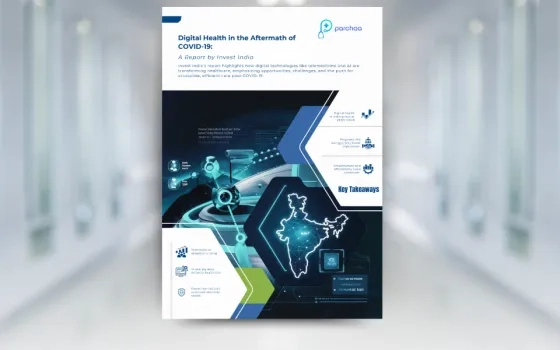When hit by a recession or by a crisis that disrupts the normal, the first reaction of many companies is to cut back, hold back and hunker down. The business mindset becomes defensive, focusing on saving money, reducing expenditure, cutting down the workforce.
In abnormal times, offense may be the best defense…
We believe that this is the very opposite of what an organization should do, when faced with a crisis, of the scale of the global COVID 19 pandemic.
At a time of crisis, there are essentially three overall courses of action, that any large, medium or small organization can take. A business can either become defensive and do cost and workforce reduction, or it can go on the offensive and invest and experiment, or it can take a pragmatic and progressive approach, yet innovation-led.
“A progressive approach, where the organization focuses on optimizing operations to bring down costs, while aggressively investing in innovation, rethinking, and marketing.”
Economic recessions of the past, have some stark lessons for us
Time and again, it has been seen that companies that take the progressive approach come out winning. Not only do they outperform the other companies during the crisis, but they also grow exponentially faster than the others, when the recovery happens.
The best way to illustrate this will be through actual examples of how top companies fared during past economic recessions and crises.
During the 2000 recession, Office Depot and Staples had very different approaches. Office Depot chose to go the defensive route and started by cutting down its workforce by 6%. It also launched an incentive plan to boost sales. However, the workforce reduction could not reduce operating costs significantly and the incentive plan could not create a substantial impact on sales.
“Consequently, after the recession, Office Depot’s sales growth crashed from 19% to 8%.”
At the same time, Staples decided to take the progressive approach. It started by optimizing the business operations and closed underperforming facilities. However, it simultaneously increased the workforce by 10%.
They did this to maximize the efficiency and experience of high-end product categories and new services, for its clients. This progressive approach resulted in Staples emerging from the recession as a much bigger and stronger company, and it had also become a much more profitable organization.
“Numerous studies have since shown that during times of recession, firms that cut costs and took a primarily defensive approach had only a 21% success rate, whereas firms that took a progressive approach had a much higher 37% success rate.”
Another prominent example is the global toy brand Lego. At a time of recession, during 2009, while other companies were cutting back and holding back, Lego took a completely different approach. They optimized their operating costs, but at the same time they launched in completely new markets. At that time, the toy market in the United States had become stagnant, so they decided to expand to Asia and also focused on increasing sales across Europe. The result was that Lego saw profit growth of over 63%.
Taking another example from the 2000 recession, one company managed to balance their pragmatic approach with an aggressive outlook, with great results. We are talking about TARGET.
“What Target did was increase their sales expenditures by 20% and it’s capital expenditures by 50%. The company also increased the number of stores it operated by over 20%.”
It also entered in new merchandise segments and grew its internet business. Target also partnered with Amazon to sell its products. It took the path of innovation and aggressive marketing. However, it also relentlessly tried to improve productivity across the company and reduce costs in every aspect of the business. It also focused hard on increasing the efficiency of its supply chain. The direct result was that Target’s sales grew by 40% and their profits soared by over 50%, as they weathered the recession. And their profit margins, which had been 9% in the three years before the recession, turned into 10%, after the recession.
Actionable steps to creating a Progressive blueprint for success
The companies that successfully navigated every recession in history, were those that went on the front foot, and balanced pragmatism with aggression. Though every organization has its own strengths, weaknesses, and competitive landscape, there are some actionable steps that they can take to create a progressive business roadmap. These five pillars will be useful guideposts, that will help you to create an effective marketing blueprint during this time of global crisis.
Redouble your efforts and hyper energize your sales pipeline
This is not a time to pull back on lead generation, or to reduce the focus on scouting for a new business or slow down networking efforts with potential new clients. This is the time to increase your efforts, spends, and focus on lead generation. This is the time to think of innovative new ways to do it. Where normally, you would network in trade shows and conferences, now you should think of channeling your efforts into webinars, online events, and one-on-one conversations. Rethink your goals and set higher ones, to connect with the right people in the right organizations. Explore and create new touchpoints and channels.
Inspire and challenge your sales and marketing teams to think differently and attract new clients. You could even experiment with outsourcing to specialists, exploring new geographies, or bringing in experts on emerging avenues as consultants. You need to step forward with focus and aggression and create enough momentum to feed your sales pipeline with more business leads than ever before. That is what will drive your business forward, now and later, when the world returns to normal.
Your customer is changing, so keep them in front and center
With the world experiencing something that has never happened before, people are thinking and behaving in ways that they had never imagined before. That includes every single customer of yours. Your customer’s behavior is changing and their priorities are shifting. You need to stay in touch with them and understand what is changing. Whether it is through surveys, direct conversations, social engagement, or webinars, you need to feel the pulse of your customer. While you need to go after your customer, it must not be for pushing your products or trying to push an agenda. It must be about understanding them, and their needs. It should be with the intention of helping them in any way that you can. It may be something as simple as making a premium web service, free for a few months.
Now is the time to create new and innovative engagement strategies, to leverage technology and find new ways of reaching out within the limitations that COVID 19 has forced upon all of us. Use this time to understand what factors matter to your customers and make changes to address them. Your consumers need to see you and your brand, as someone who is standing with them, who understands them and is working to make things better. Empathy, proactivity, and creating value, should be the guideposts for your efforts to keep your customer front and center.
Invent, reinvent, upskill and repurpose – innovation is the new normal
The ability to creatively reinvent your marketing plan to adjust to the changes will put you way ahead of your competitors. However, you do not need to rush into making changes. There is a wealth of data in your hands, study, and analyze it. Check-in with key clients directly, instead of creating a group-wide webinar. Right now, agility is a valuable quality, as the marketplace is changing fast. Respond meaningfully and creatively to the changes. Get your team to think of how existing marketing strategies can be repurposed to succeed in the changing scenario. Try to reimagine ideas and strategies that have worked before.
A robust marketing strategy that can evolve quickly, will keep you ahead when the world opens up, and your every competitor jumps in with everything they’ve got. Another way to give a powerful boost to business leadership currently is to upskill and upscale your workforce. Let your best performers raise their skill levels or even gain expertise in a new and futuristic skill. You can give your entire workforce access to online programs through which they can enhance their skills, knowledge, and abilities. You can even look at acquiring top tier talent at this time. With a shaken and uncertain market, the best talent will be available at a lower cost. That creates a unique opportunity to upscale your entire game, with the perfect offensive plan, that takes advantage of the defensive outlook of your competitors.
Optimize operations with a superhuman eye for detail
The best way to counter the impact of a recession or a crisis on your business, is to optimize every aspect of it. Whether it is realigning the workforce, eliminating non-performing divisions, fine-tuning organizational priorities, or exploring new partnerships. As a leader, your focus should be on studying every aspect of your business operations with a microscope. There are opportunities to improve and optimize in every single link of the value chain. You and your team need to exhibit superhuman attention to detail, to relentlessly find ways to refine, enhance, and streamline.
Here are a few broad areas where you, as a leader, can focus on. Think about how you can reduce the burden of routine tasks across your organization. Find ways to eliminate the low-value tasks, so that you can realign employees to high-value work. Try to streamline existing processes to maximize efficiency. Automation can improve efficiency, and enhancing communication and connectivity between employees, can improve productivity. This is also a good time to give your workforce high levels of flexibility and support. Giving greater access to ERP and enterprise management solutions, could help everyone to perform better, and respond faster. Another powerful strategy is to empower your entire organisation with more data-driven analytics, which will instantly facilitate better and faster decision making.
Let your brand be the guiding force
It is at a time like this, that your brand needs to be human, to be empathetic, to be real and authentic. Align everything to the essence of your brand, for that is what you will be remembered for when things return to normal. The price cuts, the promotions will not be remembered, but what your brand did, what your brand stood for, how your brand heled in the situation, that is what people will remember.
That is what will build stronger loyalty and attract new customers. As an organization, you need to speak in one voice, and you need to be especially considerate about what you say to your stakeholders, your customers, and your partners. You have to be helping them, and you cannot be seen as pushing your sales or products. The community that you have already built around your brand matters much more now. Be thoughtful in your approach, in every communication, and say and do things that ring true for your brand. Let your brand make you proud, let it make your employees proud, and most of all, let it make your community feel good about being associated with it.
A silver lining with a golden opportunity
A recent PwC survey of global CFOs posed the question to senior finance executives, that if COVID-19 were to end today, how long would businesses estimate it would take for them to get back to business as usual?
“22% of businesses said they would be all set within the month, and 39% estimated within a quarter.”
That we will all emerge from this global pandemic is certain. The question is when? And the bigger question for businesses is, how will they be positioned when the recovery starts?
This brings to the silver lining and a golden opportunity. It gives us time, space, and a rare chance to re-evaluate market strategies, lower costs, encourage alliances, and most importantly understand the customer better.
We hope that your approach will be progressive, and your company will be a winner. Here’s to a future that is soon going to be brighter and better, than ever before.

















